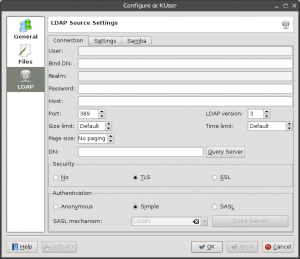KUser/zh-cn: Difference between revisions
Appearance
m Created page with "双击一个用户便会打开带多个标签的对话框。标签的数量不固定,取决于用户储存系统的类型和是否正在使用配额。" |
m Created page with "==== 用户信息 ====" |
||
| Line 30: | Line 30: | ||
双击一个用户便会打开带多个标签的对话框。标签的数量不固定,取决于用户储存系统的类型和是否正在使用配额。 | 双击一个用户便会打开带多个标签的对话框。标签的数量不固定,取决于用户储存系统的类型和是否正在使用配额。 | ||
==== | ==== 用户信息 ==== | ||
* Modify the user-properties like <menuchoice>User-ID</menuchoice>, <menuchoice>Name</menuchoice>, <menuchoice>Address information</menuchoice> or set/change a <menuchoice>password</menuchoice> for example. You can also <menuchoice>deactivate an account</menuchoice>. | * Modify the user-properties like <menuchoice>User-ID</menuchoice>, <menuchoice>Name</menuchoice>, <menuchoice>Address information</menuchoice> or set/change a <menuchoice>password</menuchoice> for example. You can also <menuchoice>deactivate an account</menuchoice>. | ||
Revision as of 15:11, 21 January 2011
 |
KUser是个用来管理系统内用户和用户组的工具。 |
特性
- 添加/编辑/删除用户
- 添加/编辑/删除用户组
- 密码管理
安装
KUser通常不会默认安装,所以需要手动安装它。 KUser是kdeadmin包的一部分。
一旦安装好,你就能在找到它,或者用KRunner (Alt+F2) 启动它,输入
kuser
。
使用KUser
启动后的 KUser窗口包含了两个标签: 和 。
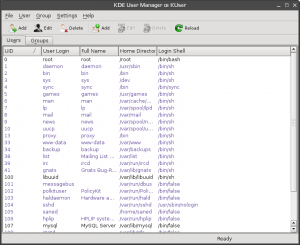
用户
双击一个用户便会打开带多个标签的对话框。标签的数量不固定,取决于用户储存系统的类型和是否正在使用配额。
用户信息
- Modify the user-properties like , , or set/change a for example. You can also .
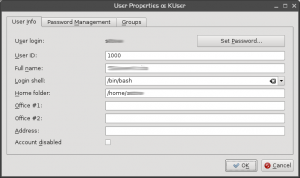
Password Management
- Change password settings, like the time after which a password has to be changed, or set a time at which an account will expire.
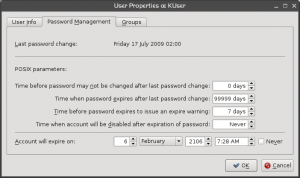
Groups
- Add or remove groups the user belongs to.
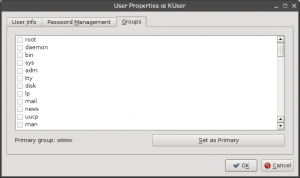
Groups
Double clicking a opens a dialog, where you can of the group and to/from a group.
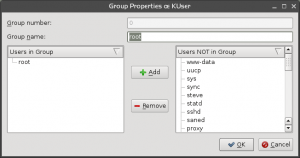
Configure KUser
Click and you can set up defaults for creating a new user:
General
- set the , the or the .
- choose if a will be created and if a (standard configuration files) will be copied to the home folder.
- set a , which creates a own personal group when a user is added and removes it, when the user is removed.
- set a .
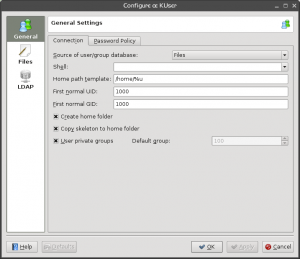
Files
- set default paths for password, group file, password shadow file and group shadow file.
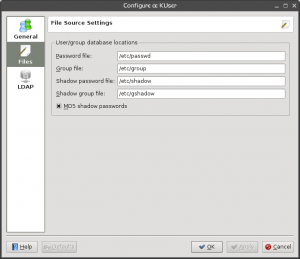
LDAP
- set preferences for users in a local network
